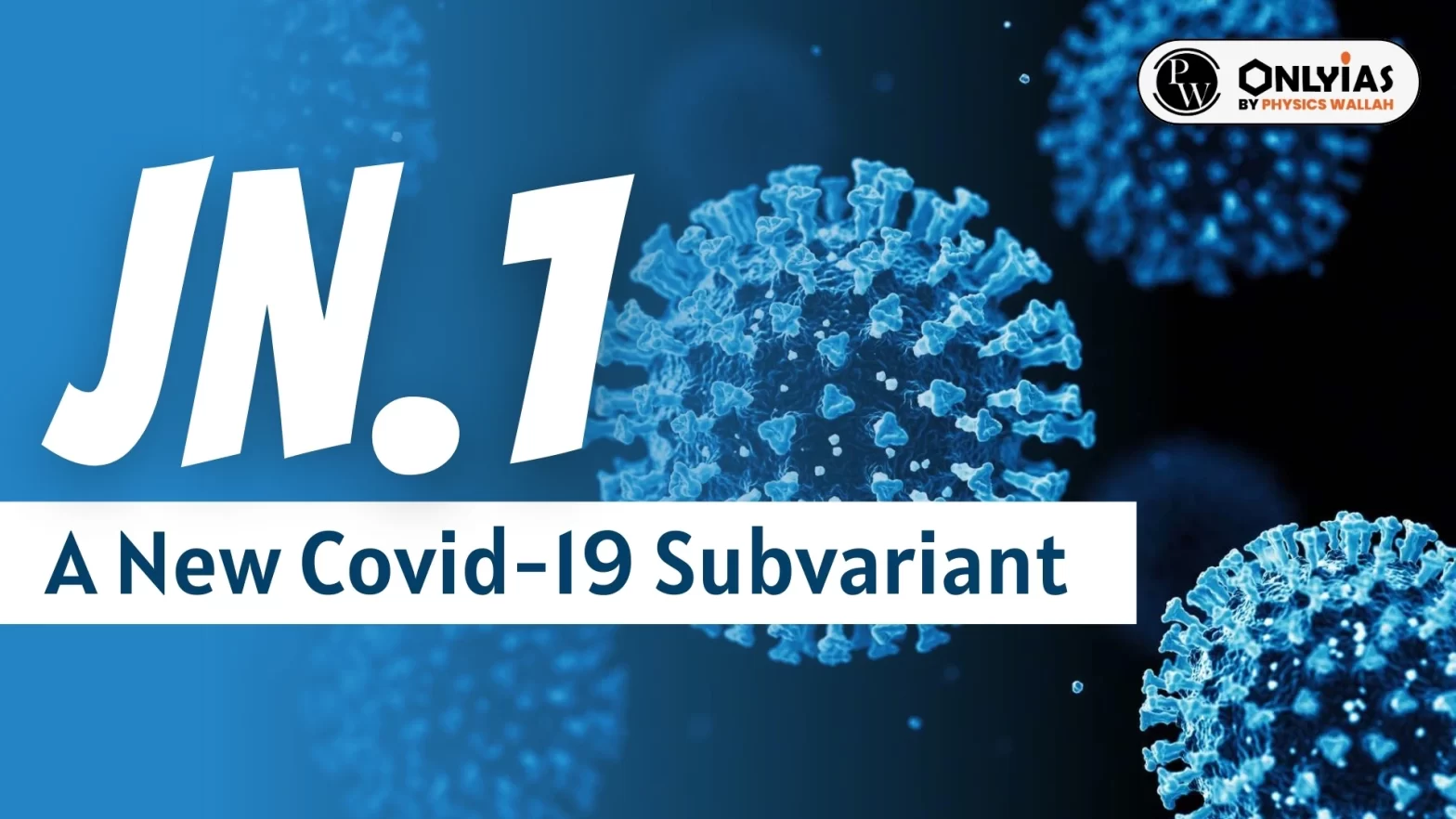Context: This editorial is based on the news “Responding to the new COVID-19 sub-variants, now and in future” which was published in the Hindu. Recently, the JN.1 sub-variant of Omicron has been reported from multiple countries and designated as a variant of interest (VoI) by the World Health Organization, which has raised concerns.
| Relevancy for Prelims: About JN.1: A subvariant of the Omicron Variant, and Variants of Interest (VoI) or Variants of Concern (VoC).
Relevancy for Mains: SARS-CoV2 & its Variants- Associated Challenges and the Way Forward |
About JN.1
- A subvariant of the Omicron Variant: Since the reporting of the novel virus in 2019, more than 1,000 sub-variants and recombinant sub-lineages have been reported. Hence, the emergence of JN.1 is not surprising. JN.1 is not a new virus but a sub-variant of BA.2.86, which itself is a subvariant of the Omicron variant of SARS-CoV-2.
- Variants of Interest (VoI): JN.1 has been designated a VoI, which is a call to step up genomic sequencing scientific work and use data to track the virus.
- No Need to Worry: Till now, there is no evidence that JN.1 causes more severe disease, thus, is not a reason for worry.
- As per current scientific evidence, vaccines and natural infection continue to provide protection, though there is some possibility of a decline in protection, as time has lapsed since the last vaccination. Therefore, there is no immediate reason to worry.
About SARS-CoV2 & its Variants
- The novel coronavirus (2019-nCoV, later renamed as Severe Acute Respiratory Syndrome Coronavirus-2 or SARS-CoV2) was first reported on December 31, 2019 from China.
- Few Famous Variants: Alpha Variant (B.1.1.7) , Beta Variant (B.1.351) , Gamma Variant (P.1) , Delta Variant (B.1.617.2) and Omicron Variant (BA.1.1.529) and a new subvariant of the Omicron variant of SARS-CoV-2, the JN.1.
About Variants of Interest (VoI) or Variants of Concern (VoC)
- There is a change observed in the genome of organisms and the international agencies and subject experts are on task to assess the risk.
- If mutations or genetic changes result in an alternation in the characteristics of the virus (such as higher transmission, more severe disease or immune escape from vaccine induced or natural immunity), then variants are termed as VoI or VoC.
- Designating a variant as VoI always does not automatically mean there is a reason to worry.
Need To Do
- Careful Interpretation of COVID-19 Cases: The spike in COVID-19 cases in India could be more artificial than real due to the increase of COVID-19 testing.
- Provide Correct Reason of Death: Some deaths are being attributed to COVID-19. However, there is no evidence that those deaths are causally linked to SARS-CoV-2. These appear to be in the individuals who were already sick and had COVID-19, as an incidental finding.
- We need to shift attention to preventable deaths due to many other reasons.
- Act Responsibly:
- Citizens: Not to share unverified social media messages.
- Government: Science communication from the government needs to be more interactive, and public communication messaging should be more routine and easy to understand.
- Clinical Management: They should focus on a syndromic approach to respiratory illnesses.
- Education Management: It is proven that the risk to children is the lowest among any age group and thus, school closure should never be considered in response to a COVID-19 case surge
- Follow Good Respiratory Etiquettes: People with cough and cold must follow good respiratory etiquette such as wearing masks in public places, covering their nose and mouth when coughing or sneezing and frequent handwashing, irrespective of whether it is a type of SARS-CoV-2, seasonal flu or any other respiratory illness.
Must Read: Mission COVID Suraksha, here.
Conclusion:
It is time we handle SARS-CoV-2 or COVID-19 just like any other respiratory illness. It is more of an individual health concern than a public health concern. COVID-19 is not a novel virus any more and is here to stay. But it is not a reason to worry.
![]() 2 Jan 2024
2 Jan 2024

